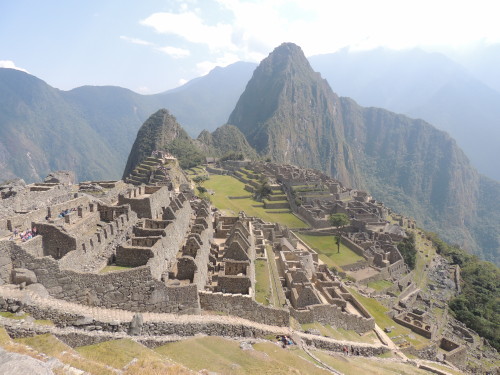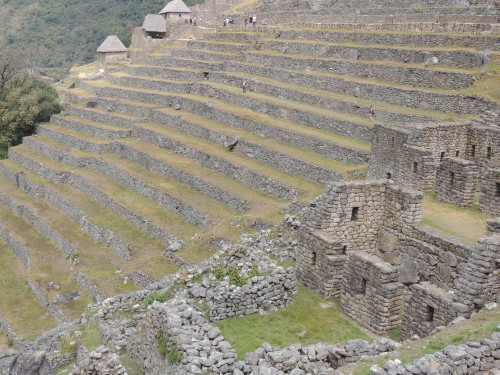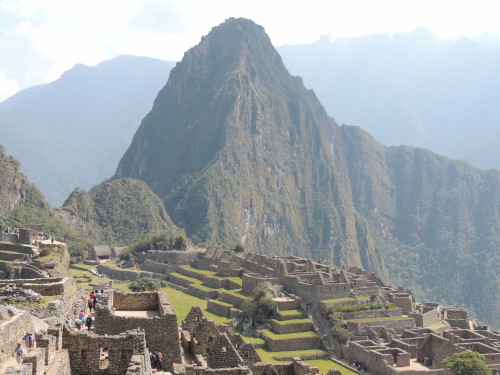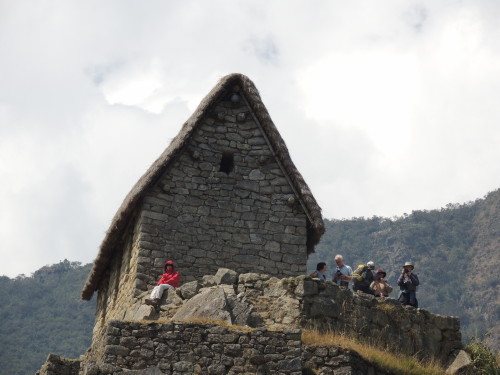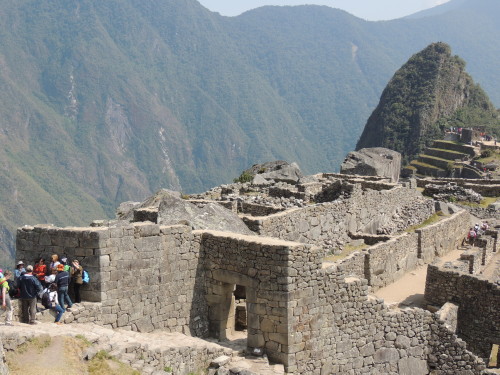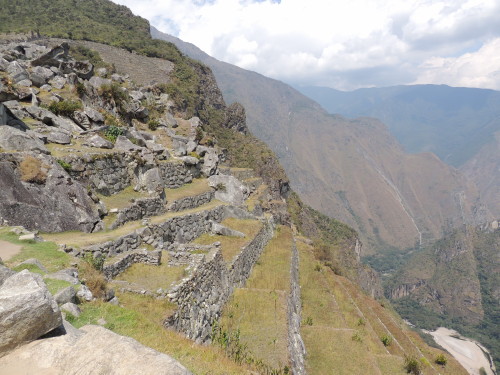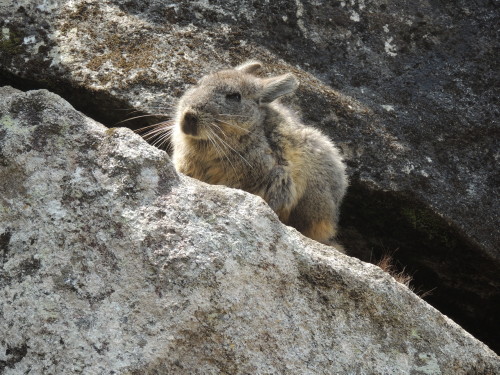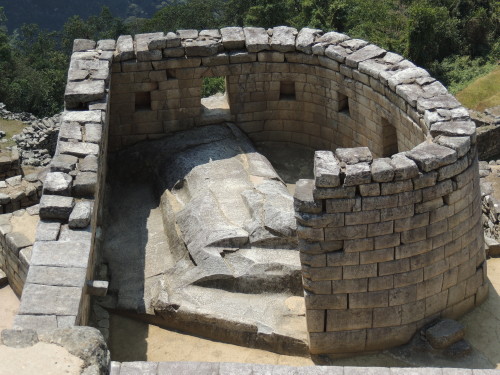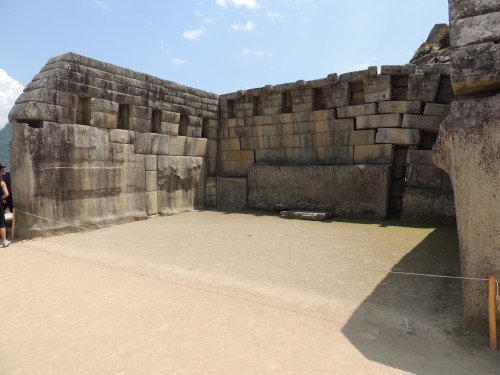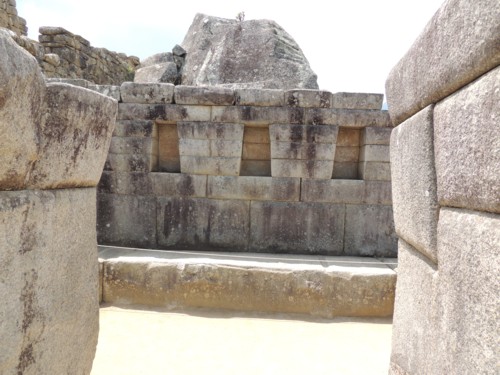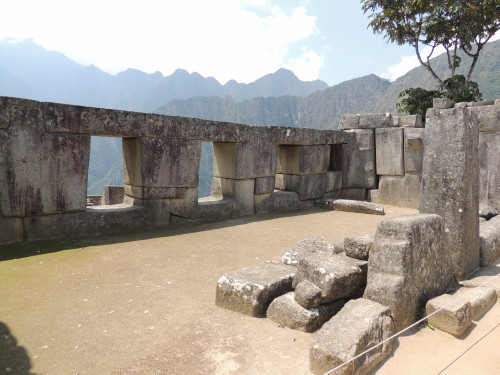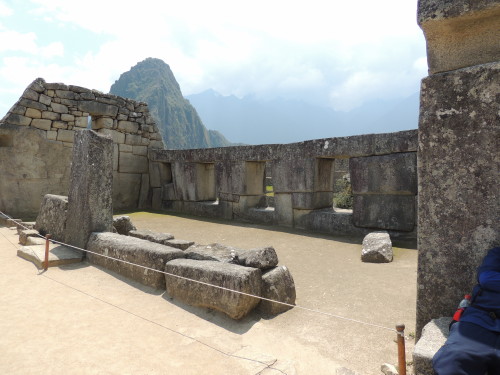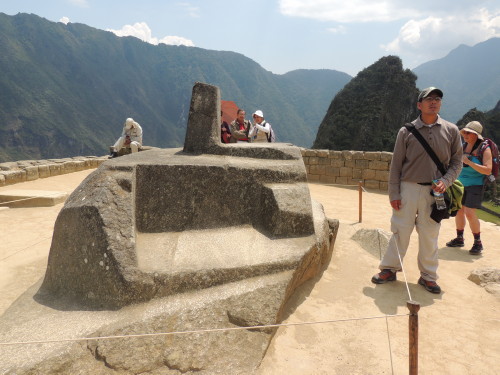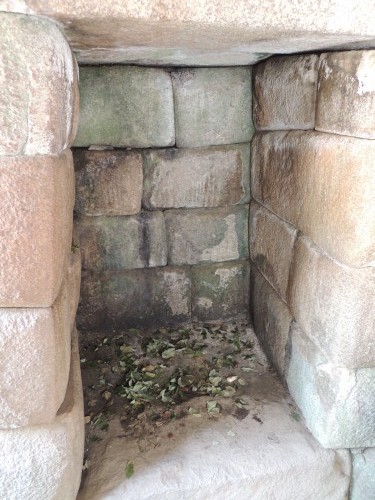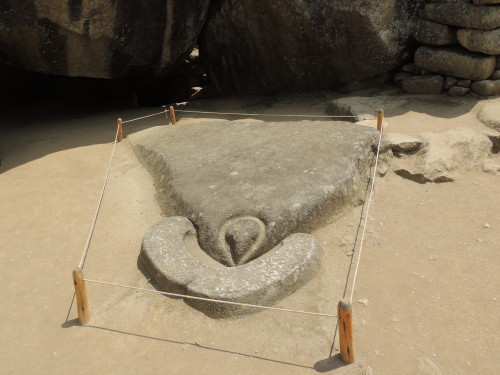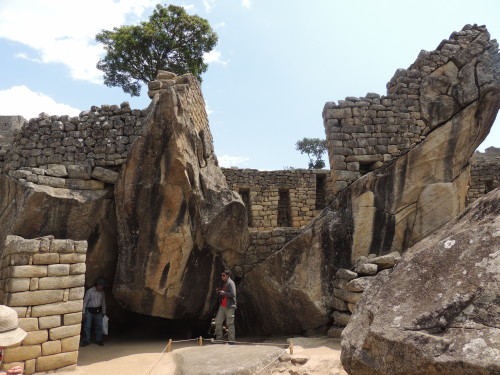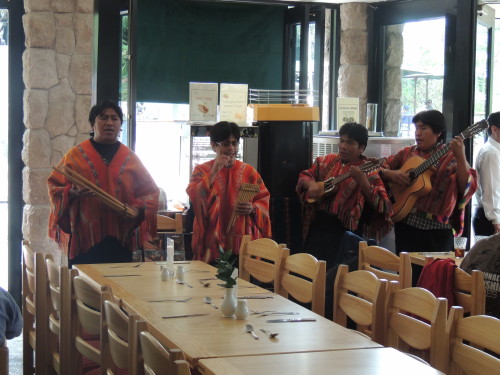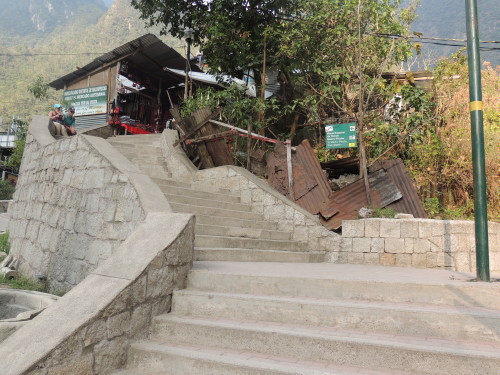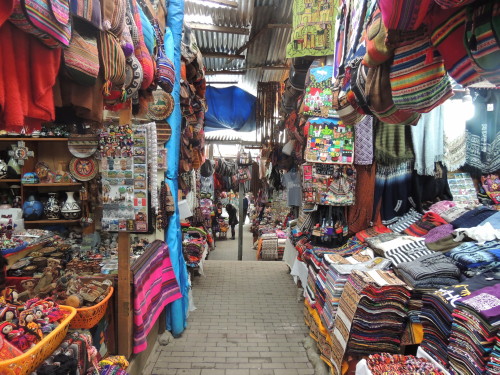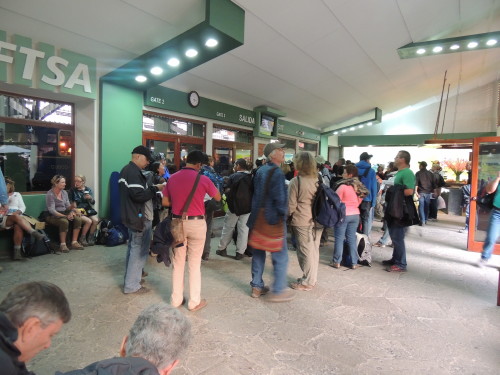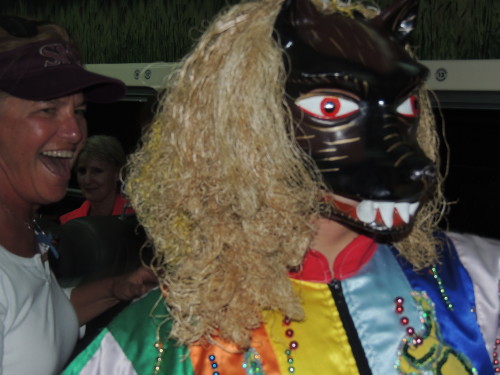Machu Picchu
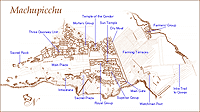 From Aguas Calientes, I caught one of the frequent bus shuttles to Machu Picchu. Seated next to me on the bus was Elena, a young Quechua Indian. Turns out she works as a guide at Machu Picchu. We shared stories about our lives, similar in so many ways yet worlds apart. The bus took about 30 minutes to wind its way up the 8 km (5 mi) of switchback road to the ruins. Upon our arrival the site was already crowded with tourists. One touristy thing I did was get my passport stamped with the official Machu Picchu stamp. Help the local economy and hire a top-notch guide when you visit Machu Picchu. Having a good guide is the key to navigating the site. Admission lasts just one day and there is a lot to see and learn.
From Aguas Calientes, I caught one of the frequent bus shuttles to Machu Picchu. Seated next to me on the bus was Elena, a young Quechua Indian. Turns out she works as a guide at Machu Picchu. We shared stories about our lives, similar in so many ways yet worlds apart. The bus took about 30 minutes to wind its way up the 8 km (5 mi) of switchback road to the ruins. Upon our arrival the site was already crowded with tourists. One touristy thing I did was get my passport stamped with the official Machu Picchu stamp. Help the local economy and hire a top-notch guide when you visit Machu Picchu. Having a good guide is the key to navigating the site. Admission lasts just one day and there is a lot to see and learn.
Machu Picchu, an incredible masterpiece of Inca architecture, is a spectacular site and spiritual place. Archeologist believe it to have been built during the first half of the 15th century, during the reign of Inca King Pachacuti, though aren't sure what is was for. The Inca had no written language, so they left no record as to why they built the site or how they used it before abandoning it in the early 16th century. The complex of palaces and plazas, temples and homes may have been built as a royal estate of an Inca king, retreat for ruling elites, ceremonial site, or a military stronghold. It is called a sacred city, sanctuary or citadel because supposedly only the Inca (king) and chosen members of his entourage had access to it.
Machu Picchu is set in a rugged geographical area in the Peruvian jungle. It is tucked on a mountainous ridge between two towering mountain peaks, the Huayna Picchu and the Machu Picchu, in the Vilcanota mountain range and surrounded on three sides by the gorges of the Urubamba River. The expansiveness of the place is astounding, and the longer you're here the more you come to appreciate it. Perched nearly 2,500 m (some 8,000 ft) in the clouds, it is a place with seemingly endless terracing stretching down 487 m (1,600 ft) to the Urubamba. Covering an area of 32,592 ha (80,536 ac), Machu Picchu is cited as one of the world's wonders and was declared a Peruvian Historical Sanctuary and UNESCO World Heritage Site in 1981 and 1983, respectively.
Machu Picchu's architectural footprint, and the orientation of its temples, was influenced by what the Inca considered to be the sacred geography of the site. The site’s important features were laid out in alignment with nearby mountains and their resident gods (apus). Surrounding sacred mountains include Huayna Picchu, Yanantin, Putucusi, Machu Picchu, Salcantay and Veronica.
The Intihuatana, a highly sacred rock (huaca), sits on one of Machu Picchu’s highest points. It is located on a hill cut and reframed by several terraces. Intihuatana is crowned by a quadrangular pillar, sculpted from the mother granite rock, whose four corners are oriented toward the four cardinal directions. The rising and setting sun is visible from all points of the compass here on the upper platform of the terracing. Two of the most revered apus aligned with Intihuatana are Salkantay, located directly south, and Veronica, to the east. Intihuatana was a shrine used for specific purposes: it measured time by charting the rising of the sun during the summer and winter solstices, as well as at the equinoxes, was used for astronomical/celestial observations, and also served as an altar for worshipping the sun, the supreme natural god.
Machu Picchu features about 200 stone structures and scientists speculate it was probably inhabited by no more than 750 people. It is divided into two sectors, the agricultural sector to the south and the urban sector to the north. The farming sector consists of terraces or andenes, supported by carved stone walls, where the Inca grew their crops. These terraces also provided protection from runoff and hillside erosion. The terraces are linked by a network of canals and aqueducts through which irrigation water was channeled. Food storage facilities and the houses formerly occupied by the caretakers of this area are situated beside the terraces.
The urban sector is divided into the urban, religious, economic and military zones, in which there are corresponding squares, palaces, temples, dwellings and burial grounds. The urban area is composed of some 170 buildings connected by over 100 stairways. The Main Plaza is a large grassy area between the eastern and western sides of this sector.
Click on image for slideshow and captions



